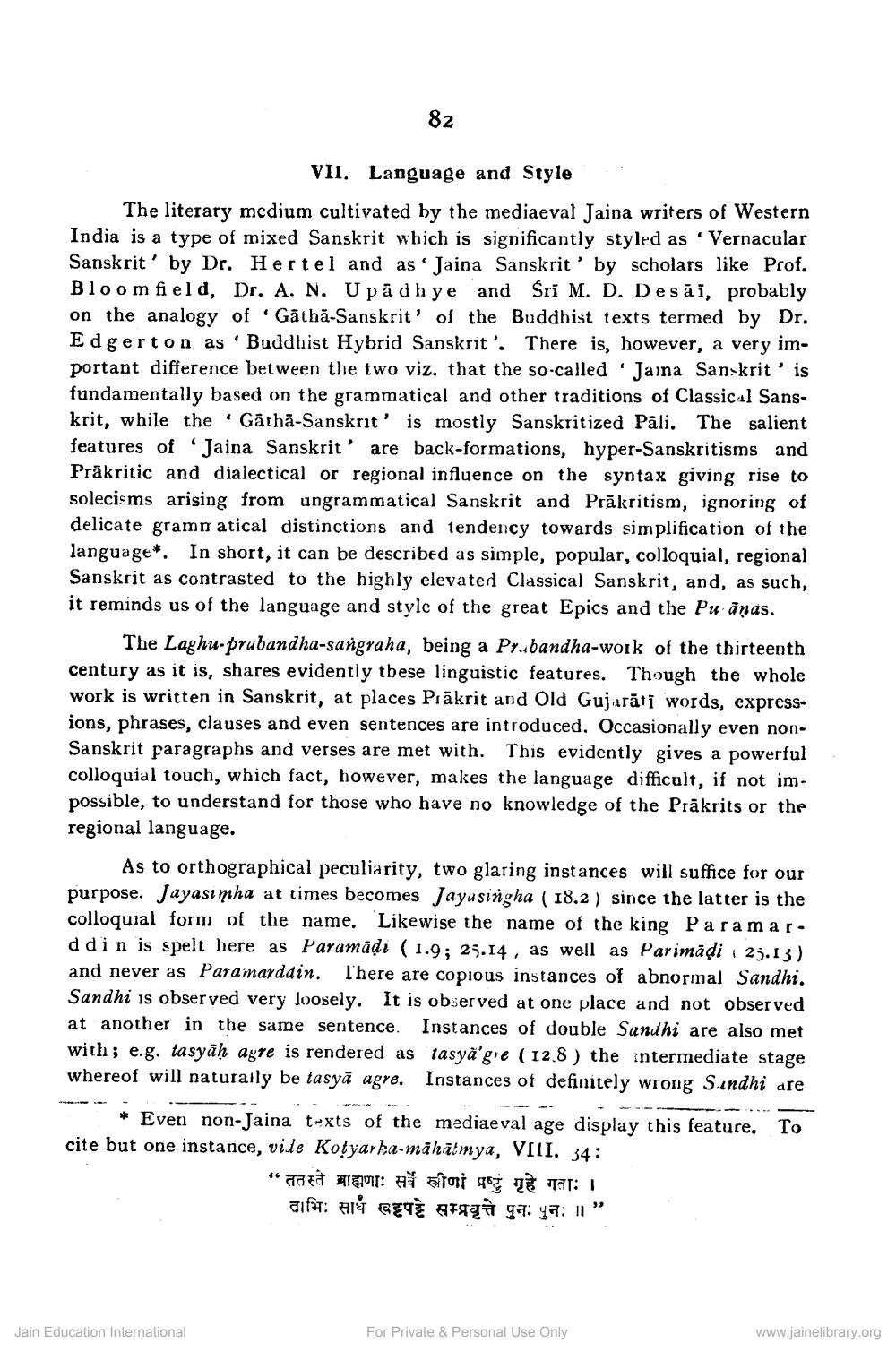________________
82
VII. Language and Style
The literary medium cultivated by the mediaeval Jaina writers of Western India is a type of mixed Sanskrit wbich is significantly styled as 'Vernacular
skrit' by Dr. Hertel and as Jaina Sanskrit' by scholars like Prof. Bloomfield, Dr. A. N. Upadhye and Sri M. D. Desăi, probably on the analogy of Gāthā-Sanskrit' of the Buddhist texts termed by Dr. Edgerton as Buddhist Hybrid Sanskrit'. There is, however, a very important difference between the two viz. that the so-called 'Jaina Sanskritis fundamentally based on the grammatical and other traditions of Classic-ul Sanskrit, while the Gathā-Sanskrit' is mostly Sanskritized Pali. The salient features of Jaina Sanskrit' are back-formations, hyper-Sanskritisms and Prakritic and dialectical or regional influence on the syntax giving rise to solecisms arising from ungrammatical Sanskrit and Prākritism, ignoring of delicate gramn atical distinctions and tendency towards simplification of the language*. In short, it can be described as simple, popular, colloquial, regional Sanskrit as contrasted to the highly elevated Classical Sanskrit, and, as such, it reminds us of the language and style of the great Epics and the Pu ānas.
The Laghu-prubandha-sangraha, being a Pr..bandha-work of the thirteenth century as it is, shares evidently these linguistic features. Though tbe whole work is written in Sanskrit, at places Prākrit and Old Gujarati words, expressions, phrases, clauses and even sentences are introduced. Occasionally even nonSanskrit paragraphs and verses are met with. This evidently gives a powerful colloquial touch, which fact, however, makes the language difficult, if not impossible, to understand for those who have no knowledge of the Prākrits or the regional language.
As to orthographical peculiarity, two glaring instances will suffice for our purpose. Jayasimha at times becomes Jayasingha ( 18.2) since the latter is the colloquial form of the name. Likewise the name of the king Paramar. ddin is spelt here as Paramādi (1.9; 25.14, as well as Parimādi 25.13) and never as Paramarddin. There are copious instances of abnormal Sandhi. Sandhi is observed very loosely. It is observed at one place and not observed at another in the same sentence. Instances of double Sanchi are also met with; e.g. tasyāh agre is rendered as tasyä'gie (12.8 ) the intermediate stage whereof will naturally be tasyā agre. Instances of definitely wrong Sindhi are
* Even non-Jaina texts of the mediaeval age display this feature. To cite but one instance, vide Kotyar ka-mahatmya, VIII. 34:
"qara lem: a mai og at:
alfat: Fry EETÈ AFiqh ga: ya: 11"
Jain Education International
For Private & Personal Use Only
www.jainelibrary.org




